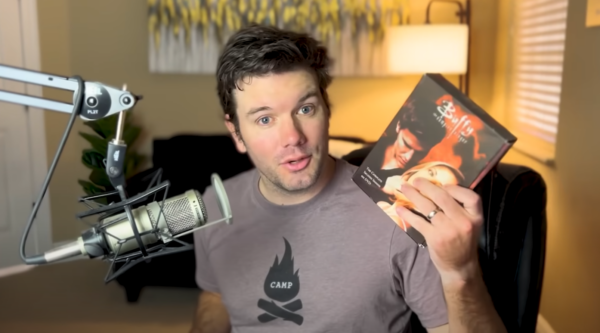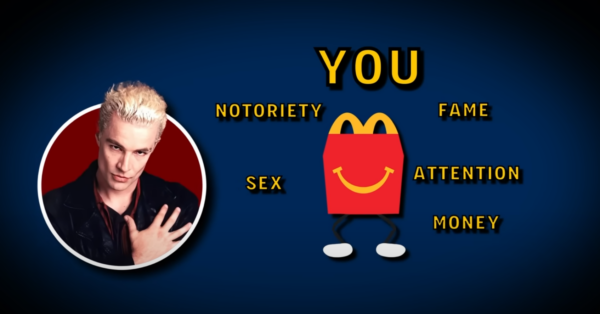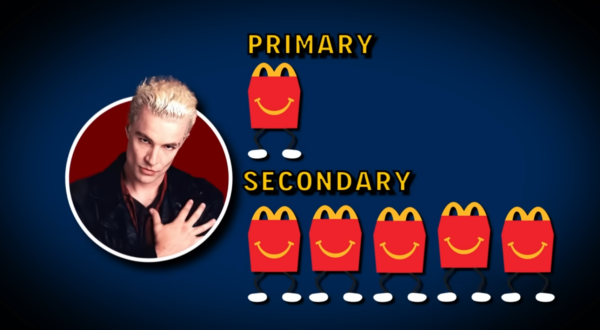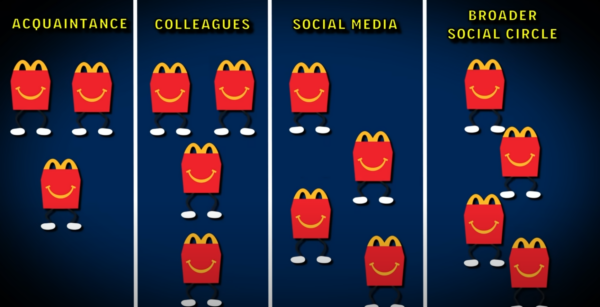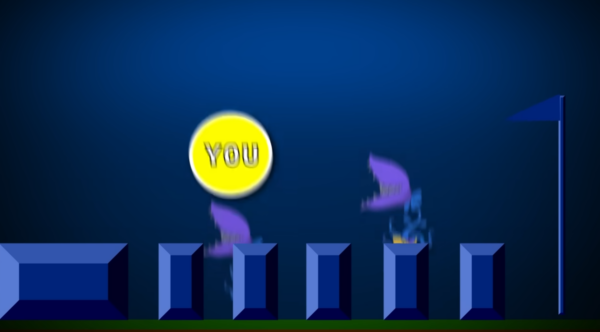A few weeks ago, I filmed this video,
And the basic premise of it was simple, when you ignore a narcissist, you are in effect interrupting their supply.
And for them, this is horrifying.
So, they react accordingly, by trying to get that supply back.
It’s basic psychological reactance, which according to our lord and savior, Wikipedia,
Is something that occurs when you attempt to limit someone’s choice of response or range of alternatives.
Basically, when you take away a narcissists supply (I.E.) the thing that they need to function they’re going to do everything in their power to attempt to pull you back in.
And that’s when I started talking about the five traps.
- Love Bombing
- Cold Empathy
- Guilt
- Anger
- Persona Of Transformation
Now, remember, at this point the narcissist hasn’t realized they’ve lost you forever yet, they haven’t collapsed. So, as you continue your silence with a narcissist they’re going to continually spring these traps in an effort to bring you back into the fold.
And, as I so eloquently put in my earlier video,
While you may not think it, the traps they spring are incredibly effective at pulling you back in to the narcissistic abuse cycle.
But what happens if you dodge all their traps?
Well, that’s what this article is about. Put simply, the narcissist is going to spiral out of control for a bit.
They are going to undergo “narcissistic collapse.”
The Narcissist “Happy Meals With Legs” Theory
Now, before we get started, there’s a theory I have that I want to run by you.
And to properly explain this theory I want to get a little bit nerdy.
When I was in high school my favorite television show was Buffy The Vampire Slayer. I’m uber nerdy about it.
Like, every two years I’ll do an entire rewatch of the series and re-rank all seven seasons from most liked, to least liked, and every two years my darn ranking changes.
And yes, I own every single season… on DVD.
Anyways, in season two of Buffy the Vampire Slayer, we are introduced to this guy, right here, Spike.
He’s a vampire.

What Are Your Chances of Getting Your Ex Boyfriend Back?
Take the quizAnd towards the end of that season good ole spike, delivers a rather interesting line,
There are billions of people walking around like happy meals with legs.
As crazy as this is going to sound that line perfectly describes how narcissists view the concept of supply.
They don’t view you as a person. They view you like a happy meal with legs. It’s just that rather than eating you like a vampire, they use you for fame, notoriety, attention, sex, money, you name it.
But let’s stick with these happy meals with legs analogy here for a moment.
Generally speaking, a narcissist will have a primary source of supply and multiple secondary sources of supply.
But my argument isn’t to deconstruct this idea but to rather limit it.
Let’s say my boy Spike had it right. Narcissists view people like happy meals with legs. Well, if that’s true then it’s likely that a narcissists supply isn’t infinite.
They can only handle a certain threshold of supply before they’re filled up.
Let’s cast good old Spike in the role of a narcissist for this example.
And let’s say that he has one primary supply.
This is the person he goes to the most for a refill and is likely to be the person he is intimate with.
But that isn’t enough to sate his hunger. So, on the side he has all these other smaller, secondary sources.
Five to be exact.
Now, I think the mistake most people make is they believe that a narcissist is constantly acquiring new supply all the time, adding numbers so that they have a near infinite pool to draw from.
I think this is wrong.
I think what’s likely happening is that a narcissist has these six sources of supply and when one drops off, they go to replace that person, rather add more management work for themselves by continually adding more people.
But it’s a whole different deal if their primary source of supply drops off.
Why is this such a big deal?
The Primary Source Of Supply: is considered the main source of narcissistic gratification for the narcissist. It’s the cornerstone of their emotional and sometimes physical sustenance in terms of ego reinforcement.
A narcissist doesn’t freak out when they lose a secondary source of supply. They’re charming, they can easily replace that by filling the position.

What Are Your Chances of Getting Your Ex Boyfriend Back?
Take the quizBut the primary source?
Ah, that’s not so easy to replace.
And this is where the spiral begins for them and it happens across four stages.
Stage One: Failure To Promote Secondary Supply
Alright, so we have Spike the narcissist. He’s just lost his main source of supply. So, he does what you a pretty much expecting him to do.
He looks to his secondary sources of supply to promote one of them to the position of primary source.
But, here’s the thing about secondary sources of supply. They’re not really up to the task by design.
Most of the time you’ll find that secondary sources of supply for narcissists come from acquaintances, colleagues, social media followers, or any broader social circle.
The interactions narcissists often have with them are superficial compared to those with the primary supply.
And as a result, the expectations placed on secondary supply sources are typically lower. These relationships are more about quantity than quality. Hence, that’s the reason, in this example there are five secondary sources of supply and only one primary.
And this got me thinking, in my last video on narcissism I made a pretty bold statement towards the end.
I made the claim that most people like to think that they’d be aware that they are in a relationship with a narcissist but I argued many people don’t realize it until they’ve likely made a few revolutions around the narcissist death cycle.
Now, that statement was predicating on the fact that I was talking about primary supply.
Well, someone who is a secondary supply for a narcissist may have no clue that they are a secondary source of supply at all. Thus, many secondary sources of supply won’t be a great fit for that primary spot.
So, at this point the narcissist has two choices and that’s really where stage two plays out.
Stage Two: The Choices
Ok, let’s go back to Spike.
He’s lost his primary source of supply , failed to replace it with secondary sources and so he is faced with two choices.
- He can seek out a new primary source of supply
- He can get the old primary source of supply back.
Usually, what you tend to see happen is that narcissists will first try to find a new supply and then if that fails they attempt to suck their old primary source of supply back via the hoover method on the narcissistic abuse cycle.
And it’s here I want to stop for a bit because in my research for this video I stumbled across something that I’m not seeing many people talk about.
A narcissist is hunting for a specific type of person to be their primary supply.
Let’s play a game.
Let’s create the perfect primary supply for a narcissist.

What Are Your Chances of Getting Your Ex Boyfriend Back?
Take the quizNow, generally the perfect supply will have six specific characteristics.
- Admiration: Narcissists prefer individuals who are willing to vocalize their admiration and provide constant positive reinforcement to the narcissist’s ego.
- Submissiveness and Dependent: A person who is submissive or emotionally dependent is often preferred because they’re easier to control and less likely to challenge the narcissist’s authority or self-perception.
- Status or Prestige: Individuals who can enhance the narcissist’s image or status through their own attributes—such as beauty, social status, wealth, or professional success—are often sought after.
- Willingness to Sacrifice: Narcissists often prefer primary supplies who are willing to put the narcissist’s needs above their own, sacrificing their own desires, ambitions, or well-being if necessary. This willingness to sacrifice is seen as proof of loyalty and love, feeding the narcissist’s ego.
- Empathy and Caretaking: Individuals who are empathetic and inclined towards caretaking can become targets for narcissists as primary supplies. Their natural tendency to care for others and see the best in people can make them vulnerable to the manipulation and exploitation.
- Resilience to Abuse: Ironically, narcissists prefer individuals who show a high tolerance for emotional abuse or neglect. This resilience allows the narcissist to continue their abusive behaviors without immediate repercussions, ensuring a more stable supply of narcissistic gratification.
Here’s the point. Our good friend Spike. He’s not really finding it easy to replace that primary supply so he decides to key in on the old supply.
And that’s when you get to stage three.
Stage Three: The Traps
Like I said at the very beginning of this video. I recently did another video that was essentially about this entire stage by itself.
This entire stage can be summed up in one simple phrase,
When a control freak loses control, what do they do?
The answer: They do everything in their power to get it back.
Have you ever played the original mario game? Not the new stuff but like the old school super Nintendo versions.
That’s a little how I view this stage.
Imagine for a moment that for this example you are Mario and your sole goal is to get to the end of the level to get to that flagpole.
The problem is that there are quite a few obstacles in your way.
Like this one, the stupid little extending flower that comes out of the pipe and tries to bite you.
Of course, it’s not just this one extending flower that you need to avoid, there are four more on top of it.
This is always how I visualize narcissistic traps.
As you approach the end of the level to attempt to get to the flagpole they spring these traps. If one fails, well, there’s always another one right around the corner.
It’s usually not a simple matter of ignoring them. In fact, in many cases this just causes them to double down on the traps to pull you back in.
- You’ve got the Love Bombing trap first.
- Next is Cold Empathy
- Then Guilt
- Then Anger
- Then the Persona of Transformation
Now, remember, the goal with all of these traps is to pull you back in as their primary source of supply.
But let’s say you avoid all the traps.
You get to the end of the flagpole.
You’ve won, right?
Well, no….
There’s still a final meltdown on the horizon.
Stage Four: The Final Meltdown
After failing to secure secondary supply, making desperate choices, and setting traps that fail to ensnare the primary supply, the narcissist faces the ultimate threat to their ego: public exposure and the loss of control over the narrative.
This stage is characterized by several key behaviors and outcomes:
Desperation Intensifies: Good old Spike’s actions become increasingly erratic and desperate. He resorts to extreme measures in an attempt to regain control or salvage his reputation which often leads to self-destructive behavior.
Which is actually proved by this research here,
The authors provide two main pieces of proof
- Meta-analysis showing a link between narcissism and impulsivity: They’ve looked at a bunch of studies and found strong evidence that narcissists tend to be more impulsive than other people.
- Re-examining narcissism’s key features: They reconsider three major signs of narcissism—self-promotion, aggression, and bad outcomes over time. They argue that impulsivity can explain these behaviors better than the older theories.
So, Spike’s desperation and impulsivity begins the true spiral.
Next come his,
Public Outbursts: Unable to maintain his façade any longer, Spike starts to have public outbursts or engage in conflicts that reveal their true nature to the world. This could include social media meltdowns, public arguments, or legal disputes.
Which of course leads to a,
Deterioration of Social and Professional Relationships: As Spike spirals, the collateral damage often includes the loss of key social and professional relationships. Friends, family, and colleagues may distance themselves after witnessing the narcissist’s behavior, further isolating them.
Which ironically puts their secondary supply in direct jeopardy.
Remember, my argument was that secondary sources of supply may have no idea that they are secondary sources of supply due to the infrequent presence of the narcissist throughout their lives.
Most of the time secondary sources of supply probably look at narcissists and think, “oh, that’s just a selfish person.”
However, when the spiral begins the secondary sources of supply start to become aware of how unstable narcissists really are.
Which leads us to,
Stage Five: Exposure of Manipulative Tactics:
The tactics the narcissist used in private become publicly known, either through the actions of the primary supply or as a natural consequence of their behavior.
This exposure undermines the narcissist’s ability to manipulate and control, as their strategies are laid bare.
Next up we have,
- Potential for Self-Reflection: Spike is faced with the consequences of his actions, he hits a low point that prompts a moment of self-reflection. However, true change is rare without professional help, as narcissistic personality disorder is a deep-seated issue.
- Possible Shifts in Behavior: In some cases, the narcissist may attempt to rehabilitate their image or adapt their strategies for manipulation. This could lead to a temporary change in behavior as they try to regain control or find new sources of supply.
But this brings up the age old question, can a narcissist ever change?
In theory, it’s possible for narcissists to undergo change. The behaviors associated with narcissism are theoretically understood as maladaptive responses formed in reaction to ongoing trauma, often stemming from childhood experiences. These behaviors don’t emerge without cause. This understanding alone suggests that these behaviors can be reversed.
Yet, there’s not enough research out there on it.
For example, I had no problem finding this research on BPD which basically argued During a 10-year period of follow-up, 91% achieve at least a 2-month remission, with 85% achieving remission for 12 months or longer..
Yet, there’s no research out there at all on if this is possible for narcissists.
And I actually think that’s a shame because it leaves a significant gap in our understanding of mental health and recovery.
For now though, my best piece of advice for your own well being is that when a narcissist begins to spiral.
Stay out of their way. You’ll be better off for it.
